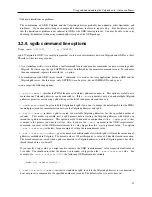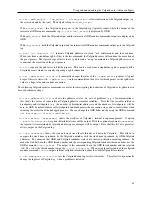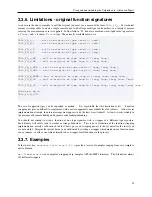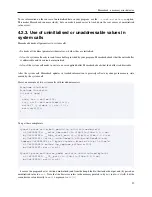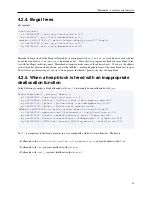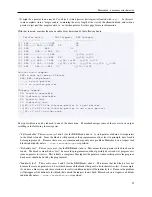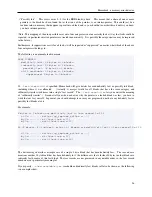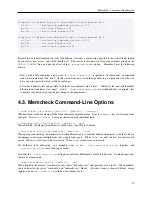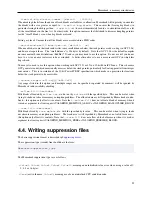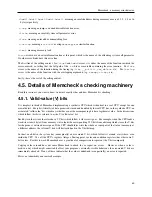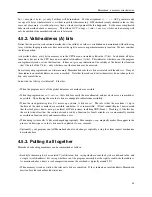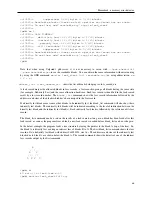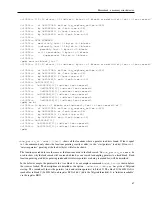
Memcheck: a memory error detector
• "Possibly lost".
This covers cases 5--8 (for the BBB blocks) above.
This means that a chain of one or more
pointers to the block has been found, but at least one of the pointers is an interior-pointer. This could just be a
random value in memory that happens to point into a block, and so you shouldn’t consider this ok unless you know
you have interior-pointers.
(Note: This mapping of the nine possible cases onto four categories is not necessarily the best way that leaks could be
reported; in particular, interior-pointers are treated inconsistently. It is possible the categorisation may be improved
in the future.)
Furthermore, if suppressions exists for a block, it will be reported as "suppressed" no matter what which of the above
four categories it belongs to.
The following is an example leak summary.
LEAK SUMMARY:
definitely lost: 48 bytes in 3 blocks.
indirectly lost: 32 bytes in 2 blocks.
possibly lost: 96 bytes in 6 blocks.
still reachable: 64 bytes in 4 blocks.
suppressed: 0 bytes in 0 blocks.
If
--leak-check=full
is specified, Memcheck will give details for each definitely lost or possibly lost block,
including where it was allocated.
(Actually, it merges results for all blocks that have the same category and
sufficiently similar stack traces into a single "loss record". The
--leak-resolution
lets you control the meaning
of "sufficiently similar".) It cannot tell you when or how or why the pointer to a leaked block was lost; you have to
work that out for yourself. In general, you should attempt to ensure your programs do not have any definitely lost or
possibly lost blocks at exit.
For example:
8 bytes in 1 blocks are definitely lost in loss record 1 of 14
at 0x........: malloc (vg_replace_malloc.c:...)
by 0x........: mk (leak-tree.c:11)
by 0x........: main (leak-tree.c:39)
88 (8 direct, 80 indirect) bytes in 1 blocks are definitely lost in loss record 13 of 14
at 0x........: malloc (vg_replace_malloc.c:...)
by 0x........: mk (leak-tree.c:11)
by 0x........: main (leak-tree.c:25)
The first message describes a simple case of a single 8 byte block that has been definitely lost.
The second case
mentions another 8 byte block that has been definitely lost; the difference is that a further 80 bytes in other blocks are
indirectly lost because of this lost block. The loss records are not presented in any notable order, so the loss record
numbers aren’t particularly meaningful.
If you specify
--show-reachable=yes
, reachable and indirectly lost blocks will also be shown, as the following
two examples show.
56

